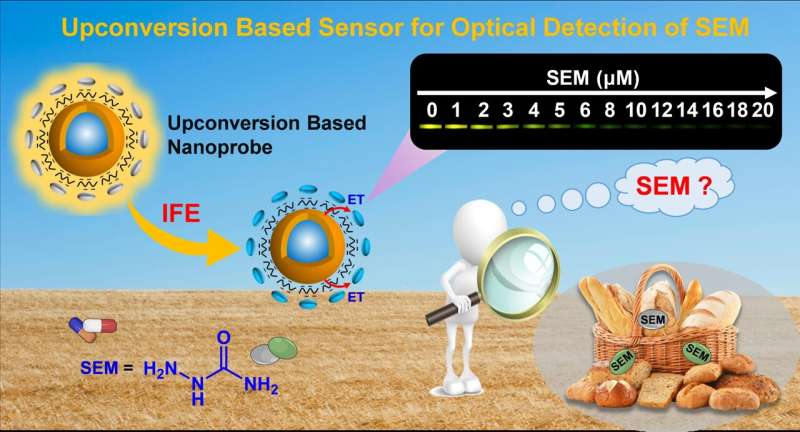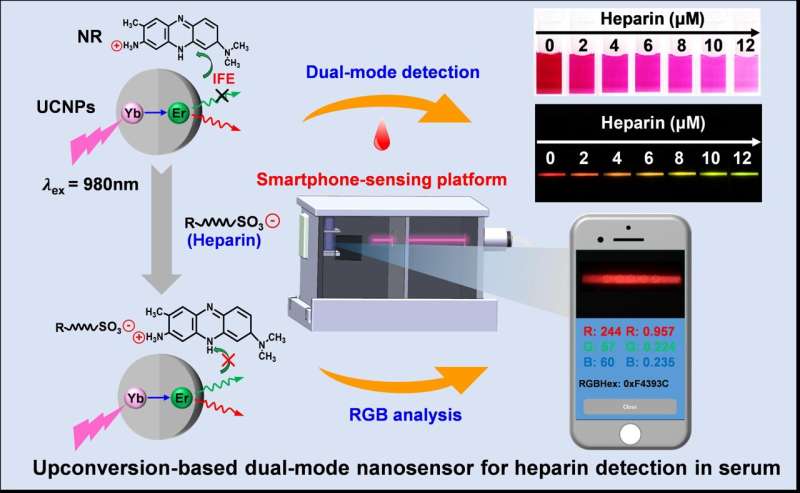Luminescent sensors developed for highly-sensitive detection of semicarbazide and heparin

A research team led by Prof. Jiang Changlong from the Hefei Institutes of Physical Science (HFIPS) of the Chinese Academy of Sciences recently developed two nanosensors based on upconversion nanoparticles to detect semicarbazide and heparin, respectively.
These sensors are made of lanthanide-doped upconversion optical materials, which helps the researchers convert low-energy near-infrared photons into high-energy short-wave visible photons.
Semicarbazide is a widespread food contaminant that can cause cancer and nerve damage. Due to the lack of optical response of traditional methods, it is difficult to construct an efficient and sensitive optical detection method for semicarbazide.
In this study, phosphomolybdic acid was used as a specific recognition element for semicarbazide, and the sensor had high sensitivity and visual response to semicarbazide in the range of 0–16 μM.
Heparin is a clinically important anticoagulant drug, which can easily lead to difficulty in coagulation at high concentration.
This novel heparin sensor solves the common problems of autofluorescence and photobleaching in traditional fluorescence methods. It exhibits a fluorescence-colorimetric dual response optical behavior with a detection limit of 0.1 nM in the fluorescence mode and 0.3 nM in the colorimetric mode.

Relying on long-wavelength excitation to eliminate autofluorescence, the nanosensor effectively improves the accuracy, and thereby expanding the clinical detection of heparin and related medical safety applications.
"These sensors are good for food safety and human health monitoring," said Zhu Jiawei, a Ph.D. student who took part in the research.
More information: Jiawei Zhu et al, Chromaticity Evolutionary Detection of Food Contaminant Semicarbazide through an Upconversion Luminescence-Based Nanosensor, Analytical Chemistry (2021). DOI: 10.1021/acs.analchem.1c04207
Jiawei Zhu et al, Upconversion-based dual-mode optical nanosensor for highly sensitive and colorimetric evaluation of heparin in serum, Sensors and Actuators B: Chemical (2021). DOI: 10.1016/j.snb.2021.130378
Journal information: Analytical Chemistry
Provided by Chinese Academy of Sciences





















